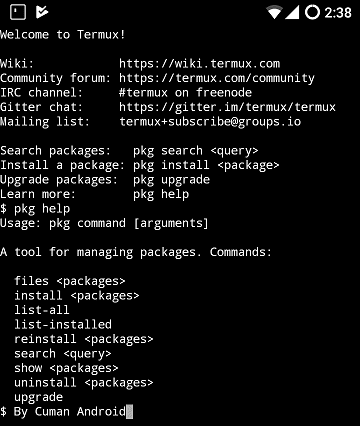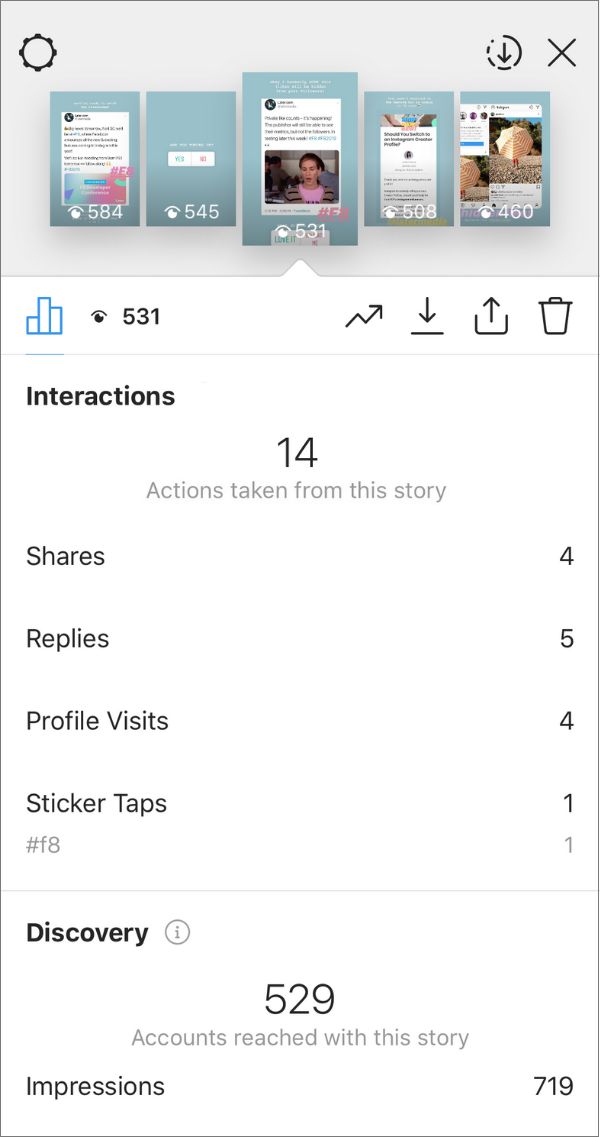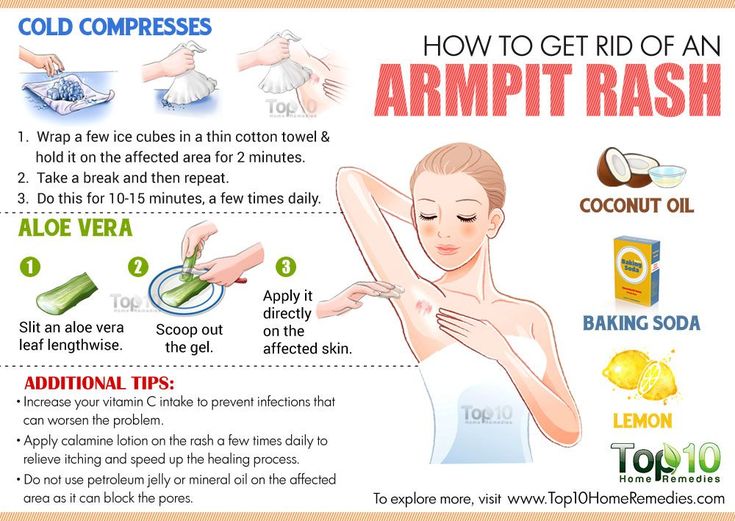How to sell on instagram with shopify
How to Sell on Instagram Using Shopify
While Instagram was once solely a place for posting in-the-moment photos, it’s now a crucial platform where brands can market their products and services.
By utilizing Instagram’s Shopify integration, businesses can showcase products that users can purchase in just a few clicks within the app — instead of exiting the platform to visit your website or online store.
This article will explore why your Shopify store should be on Instagram, how to start selling, and tips for promoting your products.
Why your Shopify store should be on InstagramThough Instagram has secured its place as one of the most popular social media platforms, it’s understandable to be hesitant about adding another profile to your list. After all, the more accounts you create, the more time you need to spend maintaining them.
Rest assured that creating an Instagram account for your business is well worth the effort. That said, here are a few reasons why you should put your Shopify store on Instagram:
According to Statista, Instagram had 2 billion monthly active users at the end of 2021. It’s highly probable that your customers are among those 2 billion users, and Instagram gives you a free opportunity to reach them.
Instagram makes shopping easyInstagram makes it easy for users to research products and services before purchasing, one reason why as many as 81% of shoppers do so.
Instagram’s “shoppable posts” have a clickable shopping bag icon that displays additional information about the product along with a “View Products” button that takes users to a Shopify store. Such posts make the shopping process smooth and seamless for users and act almost like a digital product catalog for businesses.
Access to enhanced product marketingInstagram’s Shopping features—such as shopping tags (product tagging) and Instagram shops—allow businesses to generate sales for their Shopify stores via the Instagram app.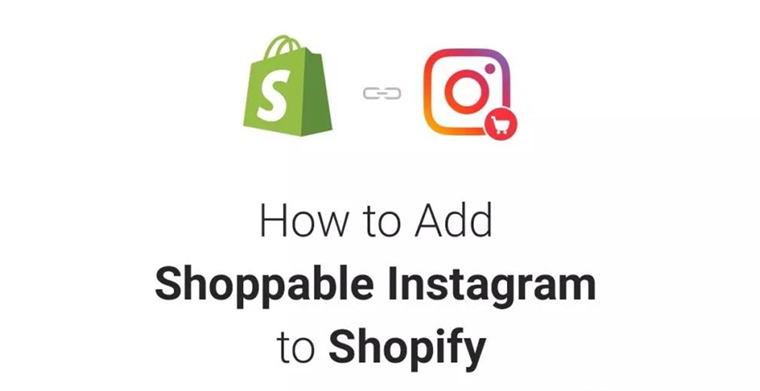
Brands can also improve customer relationships with special offers and discounts.
Now that you’re aware of why you should set up an Instagram account for your business, let’s dive into the details of how to do so.
Here’s how to start selling your products on Shopify via Instagram Shopping:
Step 1: Set up Facebook channel in your Shopify storeStart by setting up a Facebook channel that will enable you to add your Shopify products. Use it to tag all the products on your Instagram feed and Stories.
Step 2: Create an Instagram business profileNext, set up an Instagram business profile. If you already have a personal Instagram account and want to switch to a business account, you can do so from the settings menu.
Learn more about Instagram business accounts.
Unfortunately, you cannot use the Instagram Shopping feature unless you have a business account. In addition to a business account, the Instagram merchant policy requirements state you must:
- Link the account to a Facebook page containing a catalog of your products
- Sell only products (not services)
Furthermore, the Instagram Shopping feature has to be available in your region.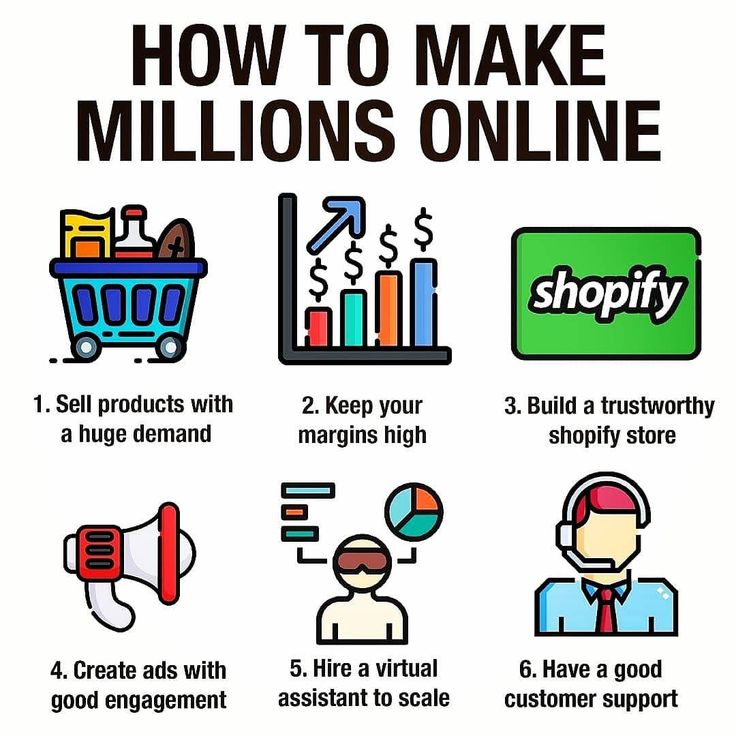
If your business meets all these requirements, you can apply for a review on Instagram. To do this:
- Go to the Settings menu
- Then go to the Business tab
- Click on Sign Up for Instagram Shopping
- Follow all the necessary instructions and click Submit
Once you get approval (which may take two to three days), you will notice the Shopping option when checking the Settings menu.
Step 3: Turn on Instagram Shopify and put your products up for saleNext, turn on the Shopping feature to tag products in images you post (creating a shoppable post). This is how Instagram users will be able to start placing orders.
Turn on the Shopping feature tag:
- Click on Profile Settings
- Click Shopping in the drop-down menu
- Hit Continue
- Link your Facebook channel to your Instagram business profile
Ready to add products to your posts and create a shoppable Instagram feed? Here are some things to keep in mind:
- Use high-quality images and high-resolution videos that will catch your audience’s attention (think of your feed as a product catalog or a store window).
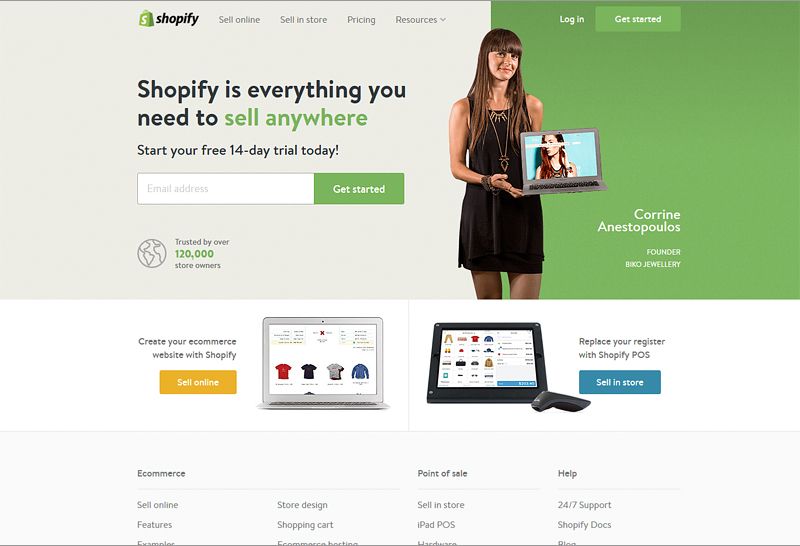
- Upload your product images with creative and engaging captions that will convince people to take action.
- Tag your products to their respective Shopify links—you can tag up to five different products per image or video.
- Ensure that the image name you use on Instagram is the same one you used on your Facebook channel.
Once you share your images, you are ready to take orders.
Step 5: Create Instagram StoriesOnce you have Instagram Shopping, you can also sell products via Instagram Stories. Remember: anything with a product tag = shoppable. Create Instagram Stories featuring your Shopify products to provide some information about them.
An Instagram Story is an excellent way to capture the attention of potential customers outside of your feed posts. While Instagram Stories are only visible for 24 hours, you can choose to save them as Highlights on your Instagram page indefinitely.
Read more about how to set up an Instagram shop
Now that you can sell your products on Instagram, let’s look at some ways you can generate sales for them!
Here are a few tips for promoting your Shopify products on Instagram:
Be authentic (while sticking to your brand)You must be unique, creative, and authentic to stand a chance of succeeding at Instagram marketing—don’t be tempted to pass other’s ideas off as your own.
Customers can form assumptions about your brand within seconds of seeing your Instagram feed posts, Stories, videos, or even your account page. To deliver the best possible impression, ensure all details align and encourage customers to interact with your brand, including the product descriptions.
Optimize your accountOptimize your account by choosing an appropriate username for your brand, using a good profile picture, and including a complete bio on your profile page.
Post when users are most activeThere are no hard and fast rules for the best posting times (though some evidence indicates there are general “better” times), so just aim to post when most of your followers are active on the platform. You can use Instagram Analytics to determine when your target audience is most engaged.
Appeal to customers’ imaginationMake it easy for users to visualize what their lives will be like when they use your products.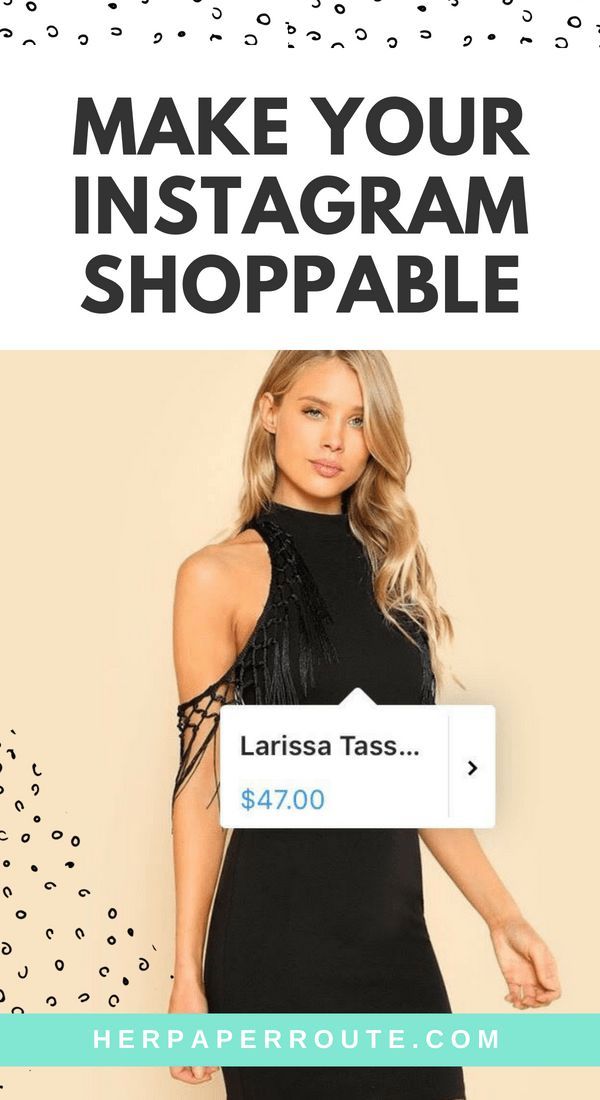 Instead of focusing on specific product features, highlight the benefits your customers will get from using them.
Instead of focusing on specific product features, highlight the benefits your customers will get from using them.
Using your brand colors or a theme for your Instagram profile page makes your account more pleasing to the eye. Additionally, a visually appealing profile and Instagram feed make an excellent first impression on users while communicating your brand’s identity.
Learn how to build a superior Instagram aesthetic for your brand.
Leverage user-generated contentIf customers post about your product, share positive publicity via an Instagram post or Story! You can also share feedback or reviews from your customers as part of your content, which gives potential customers an outside perspective.
Offer discounts and promo codesAttract new customers and retain current ones by offering exclusive deals. People are more likely to purchase from stores where they get discount offers — who doesn’t love a sale?
Promoting your Shopify store on Instagram offers tremendous benefits for your brand.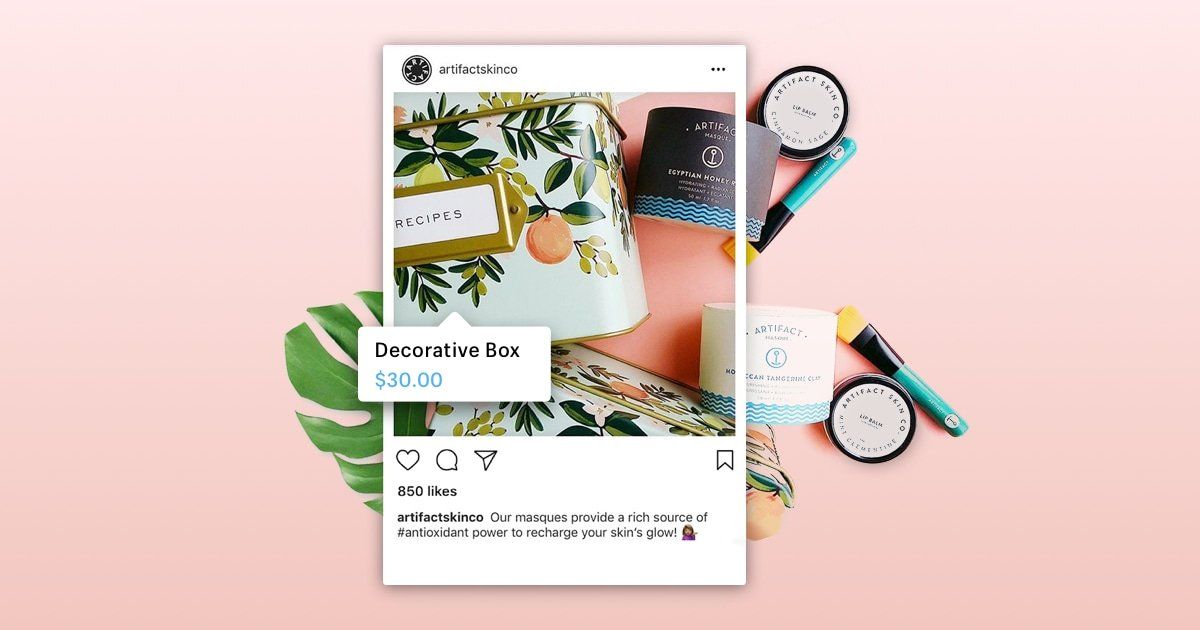 Follow our tips, stay consistent, and enjoy the results.
Follow our tips, stay consistent, and enjoy the results.
Want to see how ManyChat can lend a hand on Instagram?
START FOR FREE
You already voted!
The contents of this blog were independently prepared and are for informational purposes only. The opinions expressed are those of the author and do not necessarily reflect the views of ManyChat or any other party. Individual results may vary.
The Essential Guide To Success (2023)
Instagram Shopping is now the preferred way for consumers to learn about new brands and products on the platform, as well as purchase them in just a few simple steps. If merchants don't want to be left behind they need to board the train of selling on Instagram.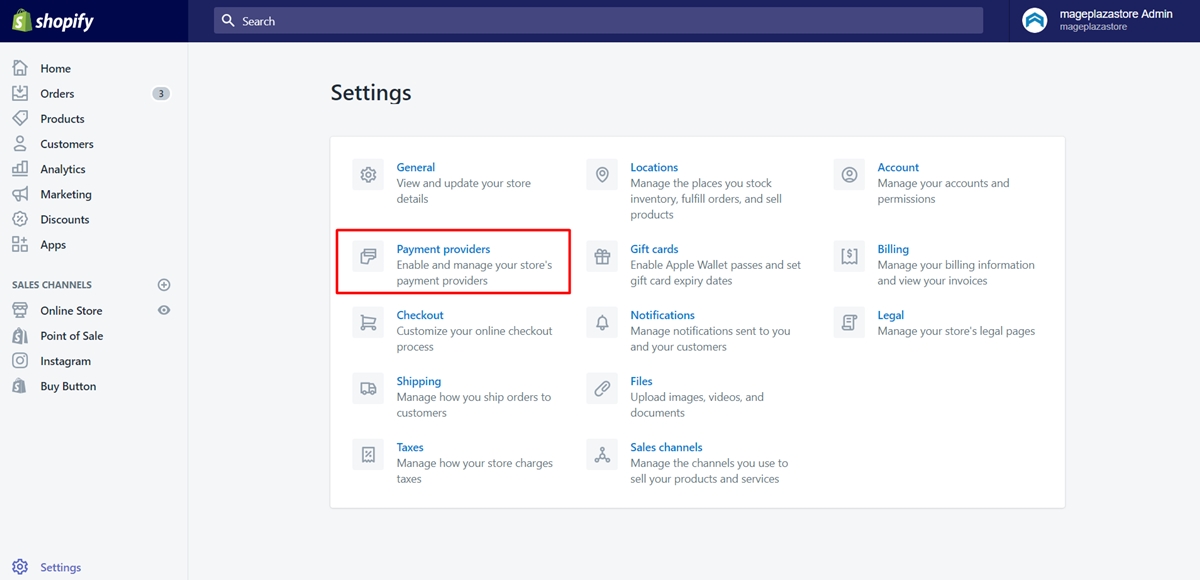
Ninety percent of Instagram users follow a business account, making Instagram Shopping an effective way for merchants to tag products in their posts, open an online storefront, and simplify the entire buyer journey, from discovery to checkout.
Learn how to set up Instagram Shopping step-by-step and sell products on social media in this beginner guide.
How to sell on Instagram
- Set up Instagram Shopping with Shopify
- Set up Instagram Shopping natively
- Set up a product catalog
- Tips for selling your products on Instagram
- How are you using Instagram to sell products?
1. Set up Instagram Shopping with Shopify
Selling on Instagram with an ecommerce platform like Shopify is simple. When you connect your online store to the Facebook sales channel, your Shopify products automatically sync to Instagram so you can create ads and Shoppable Posts easily.
You can use Shopify to create, track, and manage your ad campaigns and orders with Instagram, as well as customize your Shop and bring the look and feel of your Shopify store to it.
Before you start selling on Instagram, you’ll need to make sure you’ve set up a Facebook business page and have products in your Facebook catalog.
From there, use the following steps:
- From your Shopify admin, click Facebook under Sales channels in the left menu bar.
- Click Set up to start in the Instagram Shopping section.
- Connect the required Facebook accounts to the Facebook sales channel.
- Review and accept the terms and conditions, then click Request approval.
It takes 24 to 48 hours for Facebook to review your products. Note that this works if you’re on the Shopify Basic plan or above.
When you use Shopify to sell on Instagram and Facebook, there are apps and integrations that connect your inventory, marketing, customer, and Instagram (and Facebook) sales metrics into a central database. Sync your product catalog, discover and promote the most popular product features, and create your ad campaigns, all within Shopify.
Start selling your products on Instagram
Shopify comes with powerful tools that help you list, promote and sell products on Facebook and Instagram. Create product collections, showcase your brand and products, and make sales on Facebook and Instagram from one place.
Start selling on Instagram
2. Set up Instagram Shopping natively
First things first. To be able to sell your products on Instagram, make sure:
- Your personal account is converted to an Instagram business account
- Your business sells physical goods that comply with Instagram’s commerce policies
- Your Instagram business profile is associated with a Facebook catalog in Business Manager (See Instagram’s step-by-step guide on creating your Facebook catalog with your Instagram business profile.)
Once you’ve taken care of the step-by-step details above, you're ready to start selling your physical products on Instagram.
Open up your Instagram app and head to your profile. Tap to open the menu in the upper right corner and tap Settings. Select Business, then tap the Set Up Instagram Shopping link.
You can also create your shop through Meta Business Manager.
3. Set up a product catalog
To sell products through Instagram, you’ll need to connect your Instagram account to a catalog. Start by logging in to your Meta Commerce Manager. Commerce Manager is a feature within Facebook Business Manager that lets you set up a Facebook Shop.
Once in Commerce Manager, click + Add catalog.
Then choose the catalog type you’ll create. If you’re an online retailer, you’ll want to create an ecommerce catalog.
Then you’ll need to upload your inventory. If you’re selling a small amount of products, you can manually upload product information to your catalog. Or, you can connect a Partner Platform like Shopify to automatically import your items.
If you choose to upload products manually, here’s the product info you’ll need to include:
- 500 x 500 pixel image(s)
- Product description
- A link to your product landing page
- Price
- A SKU number
Read more: Getting Started on IG: A Beginner’s Guide to Instagram Marketing
Tips for selling your products on Instagram
- Partner with influencers
- Run Instagram ads
- Use product tags
- Use live shopping stream
- Publish reels
- Curate user generated content
- Use the right hashtags
- Use video to showcase your product
- Automate customer support with DMs
Before we dive into specific examples of how top brands use Instagram Shopping, let’s quickly outline the main tools you can use together to drive organic sales from Instagram:
Shoppable Posts. In a nutshell, Shoppable Posts lets you add product tags to your content so people can buy directly from them. Product tags on Instagram are similar to tagging other users in your posts, except you’re tagging your products. This allows shoppers to click on your tags and quickly shop your catalog of products.
Product stickers in Instagram Stories. With product stickers, ecommerce brands can tag specific products in Stories, just like you can with standard product tags in posts.
The Shop tab on your profile. The Shop tab is where your profile visitors can find all the products you’ve tagged in your Instagram posts, including the content that features them.
Collections. Product collections allow you to customize your shop with an editorial point of view by curating products into themes to help tell your brand story.
Instagram checkout. When you enable Instagram checkout, people can buy directly from Live Shopping, product launches, and Shopping for Creators. If you’re a Shopify merchant, you can use the Facebook channel integration to set up checkout on Instagram and Facebook. Shop Pay will automatically show for the customer, providing a faster and easier way for them to check out.
1. Partner with influencers
It’s safe to say that instagram influencer marketing can help you sell on Instagram. Instagram influencers are people who’ve built a reputation—and a $16.4 billion industry—around a certain niche on the platform. They work as brand ambassadors for your small business, sharing your products with their target audience in exchange for money, free products, or exposure.
Influencers can impact buying habits because of their authority in a particular industry. In the example above, @lizarch, a yoga influencer with 57,000 followers, promotes a giveaway for Savhera. The essential oil brand partnered with Liz because her audience trusts her suggestions and what she promotes.
The school of thought is that influencers are wildly expensive, as though every brand is paying Kim Kardashian $1 million to promote their products. But that couldn’t be further from the truth.
Nano-influencers and micro-influencers tend to get higher engagement rates. My best influencers have been people that are genuinely interested in the product and eager to share it with their followers.
Rhiannon Taylor, Founder of RT1home
With the rise of nano-influencers (accounts with less than 5,000 followers) and micro-influencers (between 5,000 and 20,000 followers), smaller brands can now work with influencers at a reasonable price and make more sales on Instagram.
Instagram is also making it easier for people to shop inspiring looks from influencers and creators that they love without needing to leave Instagram.
Taylor Loren, in an edited excerpt from the course How to Make Money on Instagram
Find influencers to drive sales with Shopify Collabs
Shopify Collabs makes it easy to partner with creators, promote your products, reach new customers, grow your sales, and track affiliate campaign performance all from Shopify admin.
Discover Shopify Collabs
2. Run Instagram ads
Instagram is now a place where people go to shop. Instagram’s research shows that 84% of people want to discover new products on the platform. With mobile sales projected to reach $552.28 billion by the end of 2024 in the US, Instagram launched shoppable ads to capitalize on mobile commerce.
Shoppable Instagram ads are your standard Instagram ad but with product tags. When someone is interested in your promoted product, they can go directly to a product detail page to learn more. If you’re a US business, you can run ads with Instagram checkout too, so people can purchase directly in-app.
These ads run in feed or Explore using single image, carousel, or video formats from your product catalog. They work just like regular Instagram ads: you build them in Ads Manager and can show to a custom audience or lookalike audience to find new potential customers.
3. Use product tags
The path from discovery to purchase is not linear on Instagram. As your customers are discovering your products via Instagram, product tags give your customers the ability to make a purchase directly within the app or learn more about the product via your website at the moment of discovery.
Shopping tags let businesses tag their products across Instagram so people can easily shop wherever they find joy in the app. You can tag feed posts, Stories, and Reels. If you’re a business with checkout-enabled shopping, you can also tag Live feeds.
If your goal is to get your product in front of more customers, tagged products have the opportunity to be highlighted on Instagram’s Explore and Shop tab.
When someone tags a product in their post, business owners will receive a notification. You can view all tagged content on your profile and control who tags products by managing product tag preferences in your settings.
Instagram says 1.6 million people tag at least one brand each week on the social media platform. Using product tags can help expand product awareness and drive potential customers to your products.
4. Use live shopping streaming
When you have an Instagram Shop and product catalog set up, you can start an Instagram Live Shopping stream. Live Shopping lets brands and creators sell products over a live broadcast. Think of it like a TV shopping network, but with more interaction and on your phone. Live Shopping lets you showcase products, interact with fans, and partner with other brands and creators.
As the seller, you can tag a product from your catalog to appear at the bottom on the screen during a live broadcast. Buyers just need to click the Add to Bag button, then check out.
The only caveat? To use Instagram Live Shopping, you must be a US business with access to Instagram checkout.
5. Publish Reels
Reels let your business create and publish videos up to 60 seconds long. It’s easy to get creative with easy-to-use text, AR filters, and audio to tell your brand’s story. Reels can also appear on the Explore page where anyone on Instagram can see them.
The coolest part? You can tag products in your Reels, so that when someone views your Reels they can easily access the products or collections mentioned in it.
6. Curate user-generated content
If people are buying and enjoying your product, chances are they’re posting about it on social media. User-generated content is a great way to fill your Instagram feed with quality content while still taking advantage of the various Instagram Shopping features.
One of my favorite examples of user-generated content done right is from Inkbox Tattoos. With more than one and a half million Instagram followers, it’s the poster child for how effective UGC can be for brands. This is even more so with the introduction of Instagram’s Shop tab on the home screen.
Now, with the addition of the Shop tab to Explore, Instagram’s algorithm selects items it believes users will be interested in. Here’s what it looks like:
DTC brand Vuori also began testing Instagram Shopping in 2020. Nikki Sakelliou, the company’s VP of brand, reported being hesitant at first about tagging posts in their feed. The brand publishes a lot of user-generated content to showcase its products on real people and keep its feed authentic. Roughly half of Vuori’s posts are now shoppable and highlight one product at a time.
Many brands have come to see social media marketing as the gateway that lets them connect authentically with audience members one on one. With user-generated content, brands give users the opportunity to tell real and oftentimes relatable stories—something that is hard to achieve with traditional brand-generated content.
7. Use the right hashtags
Instagram hashtags are a way to build brand awareness and connect your content to a specific topic or conversation. Hashtags make your shoppable content discoverable on Instagram and help it reach more people. When you publish a shoppable post with a hashtag, it shows up in the feed with a shopping bag icon. This tells browsers that an item in your post is available to buy.
If you already have a good idea of hashtags that work well for your brand, consider using them on your Shoppable Posts. You can go broad with a hashtag like #style or #fashion, or be a little more specific (i.e., #earringsaddict) and connect with a more targeted audience.
8. Use video to showcase your product
Did you know that after watching a video, 64% of social media users are more likely to purchase a product online? Needless to say, video should be an integral part of your Instagram marketing strategy.
Letterfolk, for example, does a great job of using video in its Stories. From product demonstrations to live Q&A, the Letterfolk team knows exactly how to take advantage of this compelling format.
The best video content tells stories that connect on a deep level with the viewer. The better you tell stories about your brand or product, the more likely your viewers are going to understand what your company is offering and what it can do for them. And, in turn, the more likely they’ll be to buy.
Best of all, you can add product stickers to your video Stories to drive sales and can even feature them permanently in your Highlights to surface them to new profile visitors.
Best practices for video content include:
- Short duration. If you’re creating a video ad, make it between six and 10 seconds.
- Design for Sound Off, in case someone is listening without sound.
- Frame your story. Use vertical (4:5, 2:3, and 9:16) and square videos to format for mobile.
Read more: 30 Instagram Bio Idea Examples to Write the Perfect Bio
9. Automate customer support through DMs
With over one billion users and counting, it’s no surprise that Instagram can help you reach new customers. Instagram Shopping features give creators and retailers the ability to manage an entire sales funnel right inside the app.
The rise of sales interactions through the platform means more customer support requests coming through your DMs. The influx of messages can be overwhelming for any account owner or support team. Fortunately, there are automation tools like ManyChat that can help you provide quick responses to customers and sell more online.
For example, you can automate responses to common questions using features like Keywords or Quick Replies in ManyChat’s flow builder. This helps:
- Solve customer issues quickly
- Assign messages to different support team members
- See past conversations with customers and take corrective action
- Automate replies
- Convert more shoppers from Instagram Shops
Learn more by reading ManyChat’s post about its Key Instagram Automation Features.
How are you using Instagram to sell products?
Instagram Shopping is just the beginning for entrepreneurs looking to boost sales on the Instagram app. There are many more platforms and strategies for you to sell products on social media. As more consumers get used to this exciting new shopping frontier, it’s up to your brand to deliver your products where new customers are spending a majority of their time: social media.
Illustration by Martina Paukova
Ready to create your business? Start your free trial of Shopify—no credit card required.
Selling on Instagram FAQ
Can you sell directly on Instagram?
Yes, you can sell directly through posts, Stories, live streams, and ads with a Shoppable Instagram page.
How do beginners sell on Instagram?
- Product tags
- Instagram ads
- Influencer partnerships
- Reels
- Livestreams
- Stories
- Hashtags
Does it cost to sell things on Instagram?
It doesn't cost anything to set up and Instagram Shop and sell on Instagram. The only thing you'll need to pay for is advertising, if you choose to run ads.
How do I accept payment on Instagram?
You can accept Shop Pay, credit card, debit card, and PayPal as payment through Instagram.
How to add a product catalog to Instagram, how to tag products
Elena
Sergeeva Targeted advertising specialistAccording to Facebook Ads, 70% of users learn about new products from Instagram.
To help sellers promote them, Instagram created the Instagram Shopping tool, which became available in Russia in March 2021. We will tell you why to connect this tool and how to set it up.
What is Instagram Shopping
Instagram Shopping is a tool that allows you to tag products in your posts and Stories. Instagram takes information about products from the catalog that the seller uploads.
The profile with the option enabled looks like this:
There is a bag icon on the photo, which means that if you open a post, goods will be marked in it. Source: COSSeveral items can be noted in the photo. When clicking on shopping tags, users will see the price and description of the product, and will also be able to follow the link and place an order on the site.
In addition to prices and the products themselves, the user also sees additional information about them: in the description, you can specify the composition of the fabric, size, available colors, etc. The user can also view the item from different angles in the gallery or learn about other products of the online store All this without leaving Instagram.
To get to the catalog with goods, you need to click on the "View store" button. Inside the store, products can be grouped into thematic collections, such as new arrivals or gifts.
US residents can pay for items within the app using Facebook Pay. In other countries, including Russia, this option is not yet available: users follow the link on the product to an external site and pay for the order there.
Why include Instagram Shopping
- The selling element is integrated into the content, which is convenient for both the buyer and the seller. The buyer does not need to switch between applications and communicate with the seller to select a product and find out its characteristics. And the seller can do without the same type of posts in the “follow the link in the description” format.
- Sellers don't have to create multiple posts for different products: they can be placed on one photo. Adding products does not take much time, and you can mark them not only in posts, but also in Stories.
- Also can be found in automatic recommendations in the "Shop" tab, which appeared for some users. You can keep up to date with the latest from your favorite brands.
Setting up Instagram Shopping: Getting Started
- Read the Facebook Ads Trade Agreement : it describes the requirements for goods, the responsibility of the parties, etc. For example, Facebook prohibits the sale of brand replicas and any products with copyright infringement, and in order for the system algorithms to work correctly, the advertiser must consent to the transfer of data from his site. Violation of the trading agreement can result in account suspension.
- Create an Instagram account - for business or for the author.
You can't post items on your personal profile. How to set up a business account on Instagram, we tell in the instructions.
- Link your Instagram account to your Facebook business page . For more information on how to do this, we have described in the article. If you don't already have a business page, create a Facebook Business Manager account first, you'll need it to set up your store in Commerce Manager. With Business Manager, you can manage your Facebook and Instagram accounts and pages, and assign people who can work with them.
- Download product catalog . The new catalog is created in Facebook's Commerce Manager, a section within the social network where you can manage your inventory and sales. If you already have a catalog, you can add it using one of the partner platforms: OpenCart, WooCommerce, Shopify, etc. We will talk about this when we go through the setup.
In the catalog you can
- Manage products: create them, edit the image, description, price and other important characteristics.
- Combine products into collections to show customers exactly what they are interested in.
- Give access to product management to other people or partner companies.
- Set the country and language so that buyers see the correct information and the correct prices.
How to add products to Instagram through Commerce Manager
Log in to Commerce Manager, also found in your ad account.
The system prompts you to create a shop or catalog. The store is a single storefront for Instagram and Facebook, which is available to companies with physical goods. To promote products on Instagram, click Add Catalog. Choose the type of catalog depending on the subject of your business, e-commerce is suitable for online stores.
In the next step, you need to configure the parameters and method for loading products. From the drop-down list, select the advertising account to which the catalog will be linked.
You can create a catalog yourself - by uploading a spreadsheet or by connecting a pixel - or through integration with one of the partner platforms. In the second case, the goods will be loaded from an existing online store.
Click the "Create" button - the catalog is ready.
Important : the catalog must contain exact prices and information about the availability of each item. In addition, the rules for returning goods must also be indicated - on the store's website or in the Instagram account.
To proceed with product creation, select the desired catalog in Commerce Manager and then click Add Products.
Add products using one of the following methods:
- Manually - this method involves filling out a form for each product and is suitable for companies with a small assortment.
- Via a data feed (spreadsheet). You can download many products at once and set up regular updates. Files in CSV, TSV and XML (RSS/ATOM) formats are supported, as well as Google Sheets.
- Automatically - through integration with one of the partner platforms. In this case, the goods will be loaded from the existing store.
- Using the Facebook pixel. If you haven't installed the pixel yet, we recommend contacting the webmaster.
If you choose to download manually, a form will open. In it you need to add the name of the product, its description, images, link to the site and price. The system will tell you which data is not required.
After completing the form and uploading, the products will appear in your catalog.
How to create a collection with products
Inside the catalog, products can be grouped into collections: for example, by subject, season, upcoming holidays, etc. Collections help sellers to get to the user's interests more accurately, and users to quickly select goods.
You can create not only the standard collections, but also those that will attract more attention, such as "Top 10 coats" or "Gifts for best friends".
You can combine products into groups manually or using filters, for example, if there are a lot of products.
At the final stage, specify the name of the collection and click the "Create" button.
After creating a product catalog, you need to send an account for verification. The verification may take several days.
How to add products to Instagram
To add a catalog to Instagram, go to the "Settings" section in the application and select the "Company" tab.
Then click "Set up Instagram Shopping" and follow the prompts.
If the catalog passes the check, a "Purchases" section will appear in your Instagram account. Once your account is approved, turn on Instagram Shopping. To do this, in the "Purchases" section, select the product catalog that you want to connect, and click "Finish".
How to tag an item
To tag an item in a post, start posting as usual - add a photo and post text, and then follow these steps:
- Click Mark Items.
- Find the product you need and select it from the catalog.
- Click "Done" and share the post with your followers.
You can also mark the product in Stories. To do this:
- Select an image to publish and click on the sticker icon in the upper right corner of the screen.
- Select the product sticker and the desired product in the catalog.
- Tag a product with a sticker and share your story with your followers.
Up to 5 products can be tagged in one photo, up to 20 in total in the gallery. In Stories, a sticker is added to only one product, but you can change its color and text.
In conclusion
Instagram Shopping will increase sales and user engagement in your account. The product catalog can be used not only to familiarize subscribers with the assortment, but also to set up targeted advertising on Facebook and Instagram.
We especially recommend this tool for e-commerce: the user immediately sees the price and all information about the product. True, if a product or service involves preliminary communication with the client and a long transaction cycle, then the published price may scare the user away. Therefore, before using Instagram Shopping, consider whether the tool suits your product and the behavior of your target audience.
Online store advertising is easier with eLama
15+ systems in one service, tools to simplify the work with advertising, closing documents and support at every stage
Try eLama
How to connect Instagram Shopping in Russia
Since March 2022, Instagram has been banned in Russia. In other countries, all its features are still available.
Instagram Shopping allows users to buy directly from a photo or video in any section of the social network. At the same time, there are different opportunities in different countries. About all the nuances - in this article.
Instagram Shopping Features
When creating a store, you can choose a sales scheme. On the website, on Facebook, on Instagram or through private messages. There are limitations here.
Somewhere you can’t sell inside the application - only show tags, information about the product in the card, and then go to the site, from where you can already place an order.
In the US and a number of other countries, full functionality is available - placing an order directly in the application. It works on the basis of the Facebook Pay service. Companies decide for themselves whether to connect the checkout feature on Instagram or not.
If they decide not to connect, they will be able to transfer the user to the site, and use Instagram solely as a showcase. The company and bank account must be registered in the United States.
If you're temporarily in a country where Instagram Shopping isn't available (for example, while traveling), you may lose the ability to tag products. Restoring access takes up to 2 weeks.
How to connect Instagram Shopping
Consider a variant with limited functionality when sales go through the site. The feature is available on business accounts that are connected to a Facebook page.
How to set up Instagram Shopping
- Create and link a directory.
Can be done using the Commerce Manager tool, a desktop platform for managing sales on Facebook and Instagram. The service helps to create a new catalog or connect an existing one, process orders, etc. To use product tags and stickers, select an e-commerce catalog.
- Connect Instagram Shopping in your profile settings and submit your account for verification. It usually takes several days. The verification status can be found at any time in the "Purchases" section in the settings. As soon as the account is approved, a notification will be sent from Instagram.
After that, you can create a post with a shopping feature. Up to five products can be added to a post with one image, and up to 20 products can be added to a post with multiple photos or videos. You can only add one product sticker per post in Stories.
Thus, you use Instagram Shopping as a storefront - a buyer on the social network will examine the product, but will go to the site to purchase.
Instagram Shopping Tags and other opportunities to promote
Instagram Shopping has a set of tools that make trading easier.
Collections of goods. You can collect products into groups by topic. At the same time, it is not necessary to make collections that are familiar to everyone, for example, “New Products” or “Hits of Sales”. Categories can be any and convenient for customers. You can create "10 Gifts for Grandma" or "All for the Holidays".
Product tags. Instagram Shopping Tags are special tags. The user clicks on them and gets to the page with information about the product. From there, he can go to the site and make a purchase. Thus, the number of clicks decreases, and the client does not postpone the purchase.
Advertising. You can set up ads with product tags. You can promote already existing publications with tagged products in the feed or popular, or create new ads in Ads Manager.
You can also create custom audiences for advertising: select groups of users who have performed a specific action. For example, those who viewed or saved the product. How to set up ads - we tell below.
You can attract new customers by creating new custom audiences or expanding old ones. Create a user group from both Facebook and Instagram. You can include more sources if you choose audience expansion.
For example, you can create a shopping custom audience that includes people from both Facebook and Instagram. You can also create a shopping custom audience based on multiple events. For example, based on the Add to Cart and View Product Details events.
For whom and for what niches Instagram Shopping is suitable
To understand which product is easier to promote on Instagram, you need to look at the portrait of the platform's audience. It's more of a female audience. Age category from 18 to 34 years.
Hence the assumption of which products will sell well on Instagram:
- Things that reflect the lifestyle - clothes, jewelry, shoes, accessories, cosmetics, perfumes, sporting goods.
- Trendy products that reflect the spirit of the times. It can be anything from a case for wireless headphones to masks and sanitizers.
- Visually appealing products whose purchases are dictated by emotions. For example, decorative interior items or handmade.
The list can be supplemented with household appliances, car parts and pet products. We will talk about limitations in the next section.
What not to sell on Instagram
Instagram is owned by Facebook and is part of its advertising network. The same rules apply for paid publications of both sites.
For example, you cannot advertise and sell tobacco and tobacco products, as well as prescription drugs, drugs, and wiretapping devices.
We have put together in a table a list of all products that cannot be advertised on Instagram. Download and study it.
Fragment of tableDownload Facebook and Instagram trading rules
How to manage the range of products in Instagram Shopping
On Instagram, just like on Facebook, you need to upload the products you are going to sell to a catalog. There are two ways to link a catalog to your social network account:
- Via Commerce Manager. This is a do-it-yourself tool available in Facebook Business Manager.
- Through a partner e-commerce platform. For example, Shopify or Big Commerce.
With the catalog you can:
- Add and manage product details. You can upload an image, write a description, set a price, change color or size. And also - add several positions at once and a link to the store's website.
- Group ads. This is useful if you need to combine different posts with a common theme. For example, information about discounts and promotions.
- Create selections for stores. To show customers all the products that may be of interest to them.
- Assign permissions. Then other people or partner companies will be able to work with your catalog.
- Download country and language information. This way, buyers will automatically see the correct information and prices for items in the ad or in the store.
Read also: What and how to sell on the Internet: a guide for business
It is not necessary to create multiple directories. All product data can be stored in one. You can change information about a product in the catalog at any time. But it is important that it always contains accurate data on prices and availability of each item.
Also, the rules for returning goods and funds should be written either on your website or in the store's Instagram account: for example, in current stories or in a separate post.
Sometimes sellers do not indicate the cost of goods and call it only in private messages. But not everyone does this. For example, the NeBabushka yarn store does not hide prices, says its owner Natalya Maltseva. The ability to put a price tag directly on a photo in a post is convenient for her.
We have never closed prices. The price in the label in the post will not scare anyone away. And if this happens, then this is not a representative of our target audience.
Natalia Maltseva
shop owner "NeBabushka"
See also: How to tie big money: the success story of the Nebabushka yarn store
According to Natalia Maltseva, Instagram Shopping tools will help meet spontaneous demand: “Now it’s traditional for us — follow the link in the profile description. And the person is forced to either leave the post and follow this link, or enter the name of the site in the browser.”
But for some sellers, the main disadvantage of Instagram Shopping is precisely that live communication with the client is lost. Sellers say that sometimes with the “answered price in PM” format, a dialogue is started with the client, which ultimately leads to a sale. Indeed, in a live conversation, the seller can always offer an alternative or resell something else.
Firstly, you can use visual content to attract potential customers, and secondly, you can immediately get feedback.
“If you break Instagram down into elements, then there will be no unique tools for promotion in the social network,” says Ekaterina Pyankova, a target specialist at MoegoSklad.
Hashtags, targeting, bloggers, smart feed - all this is also available in other social networks. Taken together, the social network continues to be one of the best for business. There are probably almost no brands left that do not have an Instagram account.
Ekaterina Pyankova
targetologist of My Warehouse
The owner of the NeBabushka store believes that the secret of Instagram's effectiveness is that communities of people with the same interests are quickly formed there.
People come to see what's going on in the store. And through Instagram, we convey the atmosphere that residents of other cities and countries cannot feel when they come to the store. For them, this is a kind of window.
Sales in social networks are suitable for those who want to receive orders online and at the same time do not invest in the creation and promotion of an online store. Watch our tutorial to learn where your products will sell best, how to process orders, and how you can save money.
Get master class recording
Targeted advertising
There are three main ways to promote your store on Instagram:
- targeted advertising,
- advertising with bloggers,
- advertising in thematic communities.
Ekaterina Pyankova considers target to be the most effective of them. This is an advertisement that is shown to an audience according to predetermined parameters: user behavior on the network, their age, interests and field of activity.
It is easier for those who use it to increase sales, because in this way the publication is most likely to be seen by those who are interested in buying. To run targeted advertising, all you need is a business account.
There are no fixed numbers on Instagram. Sometimes it's expensive and good, sometimes it's cheap and bad, sometimes it's expensive and bad, sometimes it's cheap and good. Any result is useful information for further work.
To run targeted ads, you need to set up a campaign in your Ads Manager dashboard. Through it, for example, you can run ads on:
- people who "similar" to your customers in terms of age, occupation and hobbies;
- all visitors to your page or site;
- regular customers;
- visitors who added items to their cart but did not purchase them.
Most stores stop at targeting or working with bloggers.
We review our products and engage bloggers to talk about our products. We didn’t work with targeting for a while, but now we have changed a specialist, and we will launch this type of advertising again.
Shopping ads and posts tagged with Instagram Shopping Tags
Instagram Shopping tools complement existing types of advertising. For example, you can promote posts with tagged products or create ads from scratch in Ads Manager.
Product tagged ad For a business that has been promoting their products on Instagram for a long time, the button to go to the site under the publication is a chance to increase sales even more.The ability to place a link to buy under the post will significantly increase the conversion.
What hinders the promotion of goods
Since 2016, Instagram has had an algorithmic feed, so the time of publication of advertising posts does not affect their effectiveness in any way. But the cheating of subscribers, which is still sometimes used by both business and bloggers, will not lead to anything good. In the worst case, you can lose your account.
There are other difficulties that a business may face.
If you don’t have a constant influx of new subscribers, the number of outreaches decreases. Our task now is to ensure a constant influx of fresh subscribers.
“The audience has high requirements for brands. The account must comply with trends and actively adapt to new ones. And at the same time, there are high requirements for sincerity and openness,” explains Ekaterina Pyankova.
The influence of Instagram is based on visual imagery and on conveying emotions through text and video. If a person did not immediately respond to your offer, it is likely that in a second he will be distracted and fly away somewhere else.
For example, it’s not enough for a clothing brand to simply post a photo. The audience expects videos from production, promotions, contests, high-quality videos, user-generated content.
The audience of the social network is spoiled, any “respite” threatens with replies and loss of interest. You need to constantly post new exciting content and communicate with subscribers.
How to increase user engagement on Instagram:
- Post real photos: anything that looks too photoshopped or perfect will turn off.
- Encourage user generated content. Ask customers to take a photo or video of your product and then post it to your feed or stories.
- Collaborate with others. You can expand your audience by partnering with different complementary brands. For example, if you sell sunglasses, caps or hats would be an addition.



